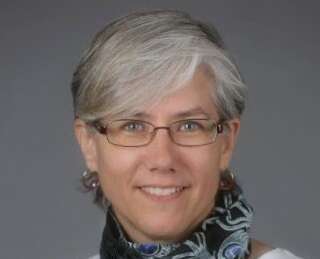
Developing an innovation playbook through health care advances
What constitutes health care innovations besides or within new drugs, new techniques and new methods of payments?
At a cost of over $1 trillion per year, accounting for one-sixth of the U. S. economy, the federal government — and everyone else — is looking for the key to innovating in health care. David Duncan, senior partner at growth strategy firm Innosight, might have the answer.
“One thing we’ve learned with respect to innovation more broadly is that in order to have an innovative solution that has a high chance of success, the way in which you understand, define, characterize the problem against what you’re innovating is critically important,” Duncan said on Theme Month, featuring Advances in Health Care for the month of September. “And if you don’t define the problem in the right way, if you don’t understand the right level of insights about it, your chances of innovating a solution that’s going to be embraced are very very low.”
Duncan said the right way to define the problem is by considering the “jobs-to-be-done.” In the case of health care, the patient is the job. Health is the desired outcome.
The problem, he said, is that the health care system tends to define the job as solving an acute problem.
“Our system is designed and optimized to fix you when you break,” Duncan told the Federal Drive with Tom Temin. “What it’s not designed for is to prevent you from breaking in the first place and to encourage a healthier lifestyle and invent a healthier lifestyle that would prevent you from ever needing to be fixed.”
And this problem isn’t solely limited to the health care industry. Most people don’t feel a strong need to live a healthier lifestyle for its own sake, Duncan said.
“Then from an innovation perspective, a helpful way to think about it is to define the problem differently, which is to find some other job to be done that they actually do feel strongly about, which, in order to satisfy that job, they would have to adopt a set of behaviors and practices that would enable them to live more healthfully,” he said.
For example, consider weight loss. Duncan said everyone knows the risks and rewards associated with the problem. But despite the incentives, many people don’t do anything about it. So they don’t have a strongly felt unsatisfied “job-to-be-done” to lose weight.
“In our theory of ‘jobs-to-be-done,’ if that highly important highly unsatisfied job does not exist, then there is not an innovation opportunity directly against that job,” Duncan said.
In that case, lateral thinking is required to get at the problem in an innovative way. In this example, Duncan suggested the ability to be a more active participant and role model to children may provide a more intensely felt “job-to-be-done,” and lead to an innovation opportunity.
In the health care community, Duncan said there are plenty of opportunities for innovation. The primary channels are new drugs and treatments. But there are even more within the system itself, he said.
New types of business models, like walk-in clinics in pharmacies and malls, are one example. Some people may be concerned with the quality, but Duncan says there are different judgments of quality, especially when dealing with innovation.
Most people think of the confidence level in the treatment when they consider quality in health care. The education and experience of the doctor directly affects that confidence level, as does the comprehensiveness of the diagnosis.
But there are other levels of quality to consider. Some people may be willing to make the trade-off — seeing a less experienced, more generalized doctor, a nurse practitioner, or undergoing less comprehensive examinations – in order to achieve a more predictable cost, lower wait times or to accommodate a lack of insurance.
Often, in a situation like this, Duncan said people already know what the problem is. They just need professional validation and a prescription. Going to a doctor’s office, much less a hospital, would be overdoing it.
“For some types of conditions, that’s actually a superior experience to what you would get with your doctor,” Duncan said.
Copyright © 2025 Federal News Network. All rights reserved. This website is not intended for users located within the European Economic Area.
Daisy Thornton is Federal News Network’s digital managing editor. In addition to her editing responsibilities, she covers federal management, workforce and technology issues. She is also the commentary editor; email her your letters to the editor and pitches for contributed bylines.
Follow @dthorntonWFED




